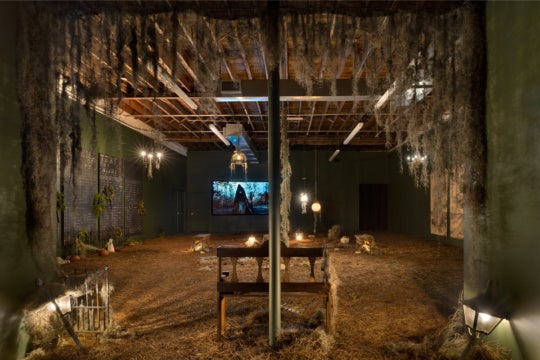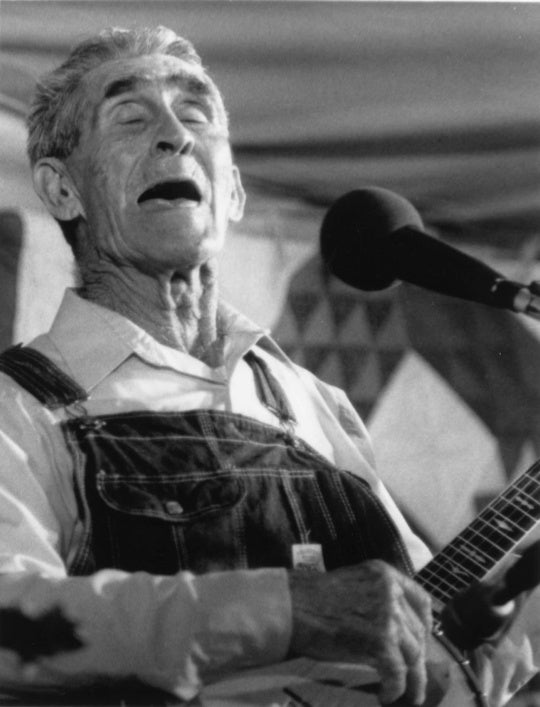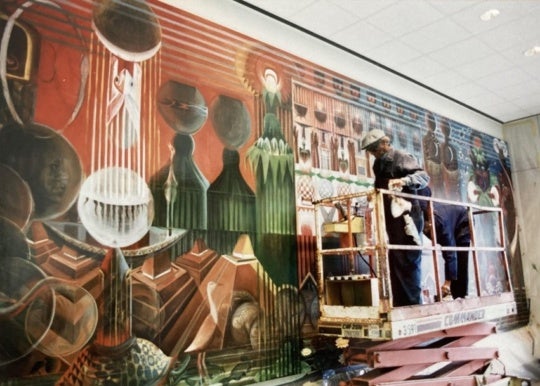
Atlanta-based dance company gloATL recently debuted Hippodrome, their most ambitious production to date. Choreographed in relation to a set designed by artist Gyun Hur at the Goat Farm Arts Center, the performance aimed for a multi-sensory experience, combining dance with visual and sensory effects—smells, live music, and even elements of taste. Bewilderingly described on the playbill as “a triptych on urban stages in concert with art, music, dance, and the liberation of space to reveal representations of the interiority in urban life, including communication, collection, loss and growth,” the aspirations of choreography and design failed to coalesce, and what parts were lucid tended towards the heavy-handed.
gloATL has gained a large following and even more sizeable reputation for choreography that engages new spaces, notably the recent performances at the Atlanta Contemporary Art Center and the Historic Fourth Ward Skate Park last year. For Hippodrome, gloATL went in a different direction, collaborating with artist Gyun Hur to create a multi-level set and choreographing the piece in direct response to it. The set utilized trademark elements of Hur’s art—silk flowers shredded into powder and the mirrored platform from her Hudgens Center exhibition—with live elements, like the grass racetrack at the perimeter and flowers planted atop the platform. The integration of set and choreography was provocative and engaging: Hur’s mirrors reflected the legs of the dancers to an effect that seemed less like a dance practice room and more like a doubling of movement in performance. The pile of silk flowers—which was revealed as a pit in the last piece—added a delightful element of surprise and created some wonderful visual moments.

The inclusion of live music by ensemble Sonic Generator and four opera soloists was also a revelation, adding a new dimension to the performance that seemed to elevate it to a more fully mature work than we’ve seen before from the dance company.
Yet several of the other elements jarred against the refinement of set and music, or distracted from the dance itself. The taglines from the description—collaboration, loss, et al—were projected against one wall, notifying the audience that the dancers were beginning a different movement in an overly didactic way. Vials of liquid were passed around in potting trays, casting dirt on audience members, and disrupting the performance for many minutes as we attempted to figure out what we were drinking. The beverage itself was an unpleasant surprise; audience members received either an astringent Chardonnay or a mixed drink of honey and elderberry wine. Serving alcohol without warning the audience of its contents seemed a severe misstep; any teetotalers must have been in for a rough shock.
At various points during the performance, several singers and musicians left their seats to take positions at corners of the room, taking attention away from dancers in key moments. This was a shame, as Hippodrome featured some of the most challenging choreography gloATL has yet attempted. Choreographer and gloATL founder Lauri Stallings has developed a unique brand of dance which elides the grotesque and awkward with the graceful, and strives to bring a new definition to ideas of beauty in movement. In Hippodrome, Stallings debuted some of her most complicated and difficult movements yet. The dancers shifted from gloATL’s signature convulsing movements to positions borrowed from the ballet canon at rapid speed. A solo performed in squatting-position was an incredible feat of strength and control. At points the dancers moved en masse, like schools of fish; at others, they inhabited tight spaces as a group, carefully winding around and through each other without making contact. Some of these tricky moves were more successful than others, though the lack of synthesis could have been due to opening-night jitters.

Yet as the performance went on, individual moments lost their resonance and the themes became overwhelmed by the excess of elements. The tags of collection, communication, loss, and growth came off as vague—or worse, heavy-handed—for example when a dancer in the “loss” movement pretended to weep loudly. Through the din, however, a humanist sense of the individual slowly arose, creating the most lucid note of the evening. The audience’s proximity to the dancers allowed every bead of sweat to stand out. One could see the exhaustion in their eyes, the bandages on their toes. Even in times of repose, determination, focus, and physical stress emanated from the each dancer. In their struggles, Hippodrome morphed into a portrayal of the individual grappling with modern concerns and contemporary society, feeling the strain of living in close proximity to others yet with a distinct sense of separation and psychological isolation. Though this moment of resolution was brief, it was powerful.
But just as Hippodrome seemed to attain the heights it had reached for, the performance ended, or rather, dissolved. As the musicians entered the main arena, the audience waited expectantly to see what would come next. When musicians and dancers began embracing and shaking hands and Stallings herself entered the ring, we gradually realized Hippodrome was in fact over. Though it was an awkward conclusion, perhaps it was a fitting summation of the overall experience. The audience was left confused and undecided, yet with a sense of anticipation. Hippodrome is just one chapter in the evolution of gloATL and, though the company is experiencing growing pains as their performances become more complicated, the ambitions of this performance hint at greater things to come.




